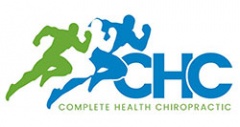
Where does knee pain start?
Common sense would lead you to believe that your knee pain may actually becoming from, well your knee.
The pain that you’re experiencing in your knee is likely due to damaged or inflamed structures in the knee but the excess stress that caused the injury might coming from above and below the knee.
Our knees- such crucial and complex joints; they are at the center of attention when it comes to almost everything we do in our daily lives. Whether it’s pleasure or pain, the knees see it all. From the time we wake up to the time we go to bed, our knees are putting in some serious hours to make sure the world goes round.
Our knees enjoy the pleasure of being bent to ask a spouse to become our life partner, to the pain of taking a nasty blow in which it is usually a guarantee that the player will be sidelined for an entire season (if not more).
Injuries to the knee typically result from overuse, or from a single traumatic event. In this multi-part segment we will focus primarily on overuse knee injuries. We will examine knee pain from multiple views, and discuss why and how knee pain can occur from some of the most common daily movements, to the more complex and athletically induced ones. More specifically, the lack of hip stability, weak ankles/poor ankle stability + lack of balance.
In part 1 of this article we will go over the basic anatomy of the knee
Part 2 we will discuss the role of the hip
Part 3 we will look at the ankle.
We will not divulge into a full anatomy lesson of the knee, but it is important to be familiar with these components of the knee, because they are the primary structures to be affected during a knee injury.
Anatomy 101
Our knee consists of three bones, our Femur (thigh bone), Tibia (weight-bearing, “shin” bone), and our Patella (“kneecap”).
The knee is a hinge joint, meaning it primarily moves in two directions (flexion and extension) and allows for slight internal and external rotation. Within the knee, there are four main ligaments that provide stability and support through our many actions, the ACL (anterior Cruciate Ligament), PCL (Posterior Cruciate Ligament), MCL (Medial Collateral Ligament) and LCL (lateral Collateral Ligament). There are also two main structures that act as a cushion during knee movements and those are the Medial and Lateral Meniscus.
We hear all the time about people injuring their ACL or MCL, or all of the above, depending on the severity of the injury. And like most things, sports are not the only cause of knee injuries; but sports normally do play a major role leading up to the injury.
Come back for part 2!
